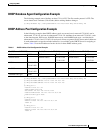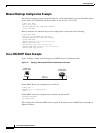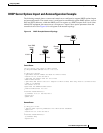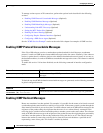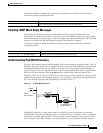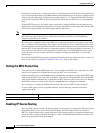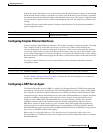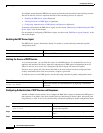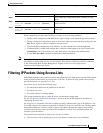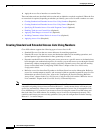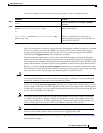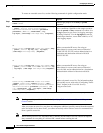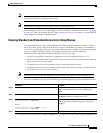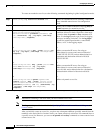
Configuring IP Services
Managing IP Connections
IPC-85
Cisco IOS IP Configuration Guide
IP provides a provision known as source routing that allows the source IP host to specify a route through
the IP network. Source routing is specified as an option in the IP header. If source routing is specified,
the software forwards the packet according to the specified source route. This feature is employed when
you want to force a packet to take a certain route through the network. The default is to perform source
routing.
To enable IP source-route header options if they have been disabled, use the following command in
global configuration mode:
Configuring Simplex Ethernet Interfaces
You can configure simplex Ethernet interfaces. This feature is useful for setting up dynamic IP routing
over a simplex circuit (a circuit that receives only or sends only). When a route is learned on a
receive-only interface, the interface designated as the source of the route is converted to the interface
you specify. When packets are routed out this specified interface, they are sent to the IP address of the
source of the routing update. To reach this IP address on a transmit-only Ethernet link, a static Address
Resolution Protocol (ARP) entry mapping this IP address to the hardware address of the other end of the
link is required.
To assign a transmit interface to a receive-only interface, use the following command in interface
configuration mode:
See the “Simplex Ethernet Interfaces Example” section at the end of this chapter for an example of
configuring a simplex Ethernet interface.
Configuring a DRP Server Agent
The Director Response Protocol (DRP) is a simple User Datagram Protocol (UDP)-based application
developed by Cisco Systems. It enables the Cisco DistributedDirector product to query routers (DRP
Server Agents) in the field for Border Gateway Protocol (BGP) and Interior Gateway Protocol (IGP)
routing table metrics between distributed servers and clients. DistributedDirector, a separate standalone
product, uses DRP to transparently redirect end-user service requests to the topologically closest
responsive server. DRP enables DistributedDirector to provide dynamic, scalable, and “network
intelligent” Internet traffic load distribution between multiple geographically dispersed servers.
DRP Server Agents are border routers (or peers to border routers) that support the geographically
distributed servers for which DistributedDirector service distribution is desired. Note that, because
DistributedDirector makes decisions based on BGP and IGP information, all DRP Server Agents must
have access to full BGP and IGP routing tables.
Refer to the Cisco DistributedDirector 2501 Installation and Configuration Guide or the Cisco
DistributedDirector 4700-M Installation and Configuration Guide for information on how to configure
DistributedDirector.
Command Purpose
Router(config)# ip source-route
Enables IP source routing.
Command Purpose
Router(config-if)# transmit-interface type number
Assigns a transmit interface to a receive-only interface.



